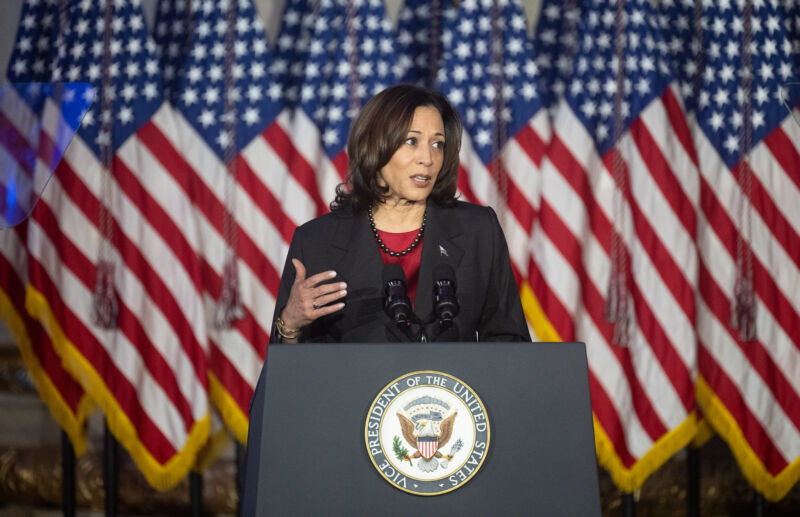One of the core tenets of NASA's Artemis program to return astronauts to the Moon is its inclusion of international partners. This intertwines the program, like the International Space Station, with considerations of geopolitics and international relations, alongside key themes like US national prestige, exploration, and scientific discovery.
Earlier this year, NASA named a Canadian astronaut, Jeremy Hansen, to the Artemis II crew training to fly around the far side of the Moon, a mission that will likely launch sometime in 2025. This flight won't land on the Moon, but NASA plans a series of lunar landing missions beginning with Artemis III later this decade.
On Wednesday, Vice President Kamala Harris announced an international astronaut will land on the Moon during one of NASA's Artemis missions.
"Today, in recognition of the essential role that our allies and partners play in the Artemis program, I am proud to announce that alongside American astronauts, we intend to land an international astronaut on the surface of the Moon by the end of the decade," Harris said at a meeting of the National Space Council.
Although the National Space Council is useful in aggregating disparate interests across the US government to help form more cohesive space policies, public meetings like the one Wednesday can seem perfunctory. Harris departed the stage soon after her speech, and other government officials read from prepared remarks during the rest of the event.
Nevertheless, Harris' announcement highlighted the role the space program plays in elevating the soft power of the United States. It was widely assumed an international astronaut would eventually land on the Moon with NASA. Harris put a deadline on achieving this goal.
Among friends
NASA has long included astronauts from its international partners on human spaceflight missions, dating back to the ninth flight of the space shuttle in 1983, when West German astronaut Ulf Merbold joined five Americans on a flight to low-Earth orbit. This was seen by US government officials as a way to foster closer relations with like-minded countries. The inclusion of foreign astronauts on US missions also repays partner nations who make financial commitments to US-led space projects with a high-profile flight opportunity for one of their citizens.
In a similar way, the Soviet Union provided its Cold War allies with seats on Soyuz flights to low-Earth orbit. For several years, China has extended invitations for international astronauts to fly to its Tiangong space station. So far, only Chinese astronauts have visited Tiangong.
NASA managers dole out crew assignments on the International Space Station based on each partner's financial contribution to the operating costs of the US-led segment of the complex. NASA is responsible for more than three-quarters of this part of the ISS budget, followed by Japan, the European Space Agency (ESA), and Canada. Russia is responsible for paying operating costs for its section of the ISS.
Among the international partners contributing to Artemis, it seems most likely a European astronaut would get the first slot for a landing with NASA.
ESA funded the development of the service modules used on NASA's Orion spacecraft, which will ferry astronauts from Earth to the Moon and back. These modules provide power and propulsion for Orion. ESA is also developing refueling and communications infrastructure for the Gateway mini-space station to be constructed in orbit around the Moon.
A Japanese astronaut might also have a shot at getting a seat on an Artemis landing. Japan's government has committed to providing the life-support system for the Gateway's international habitation module, along with resupply services to deliver cargo to Gateway. Japan is also interested in building a pressurized rover for astronauts to drive across the lunar surface. In recognition of Japan's contributions, NASA last year committed to flying a Japanese astronaut aboard Gateway.
Canada is building a robotic arm for Gateway, but a Canadian astronaut already has a seat on NASA's first crewed Artemis mission, albeit without a trip to the lunar surface.



3175x175(CURRENT).thumb.jpg.b05acc060982b36f5891ba728e6d953c.jpg)
Recommended Comments
There are no comments to display.
Join the conversation
You can post now and register later. If you have an account, sign in now to post with your account.
Note: Your post will require moderator approval before it will be visible.